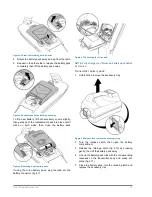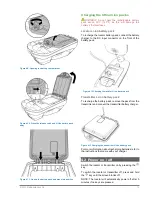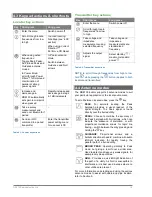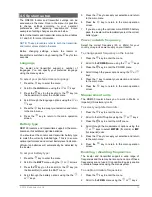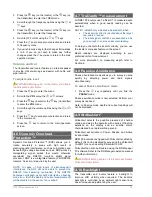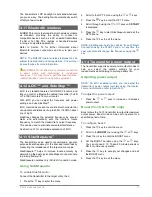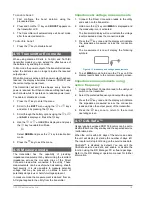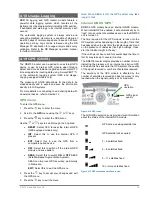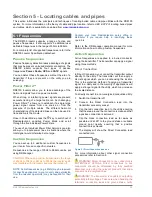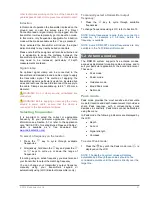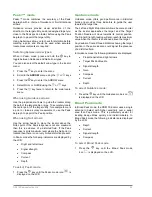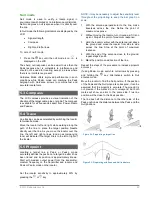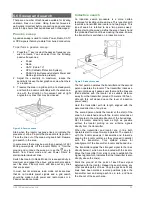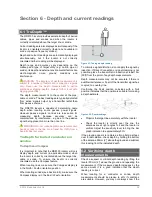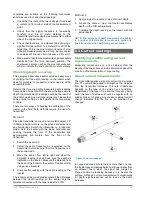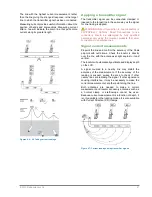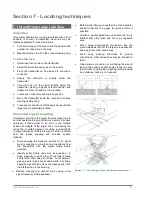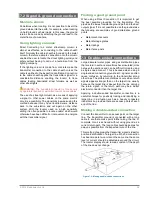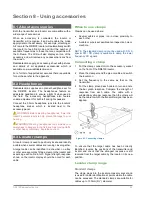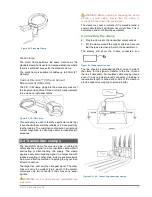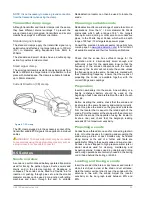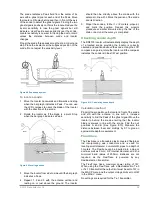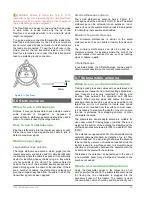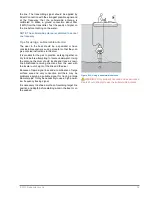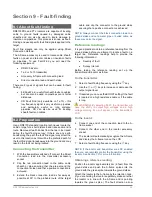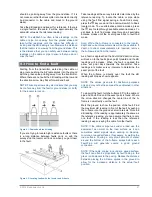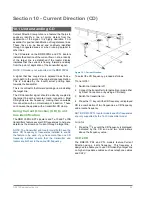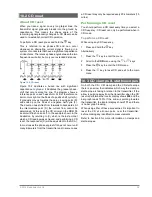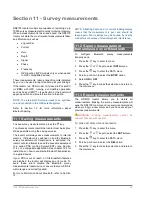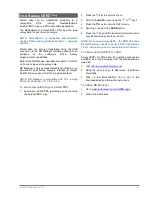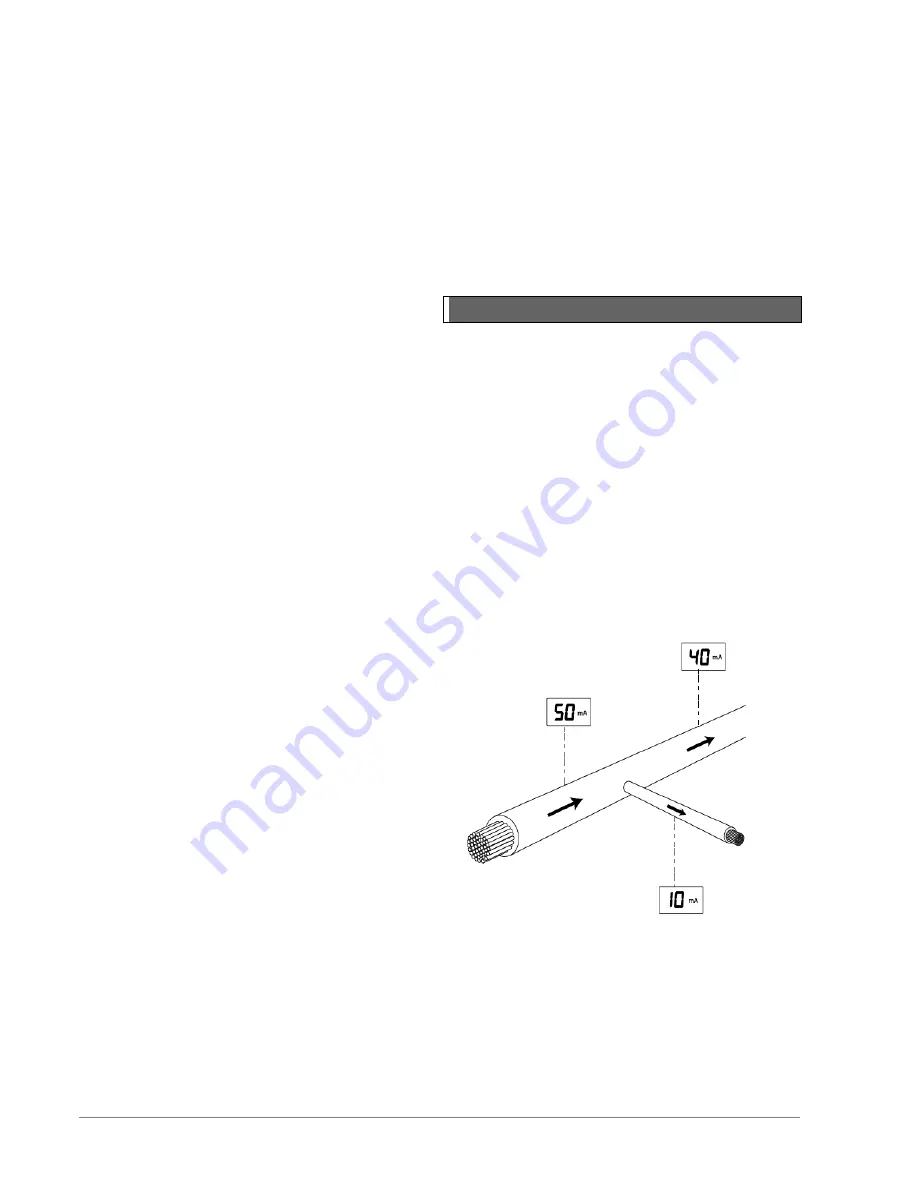
© 2015 Radiodetection Ltd
26
conditions are suitable so the following techniques
should be used to check critical readings:
Check that the route of the line is straight for at least
2 meters (6 ft) to either side of the measurement
point.
Check that the signal response is reasonably
constant over the 15 meter distance to the
transmitter and make depth measurements to either
side of the original point.
Check that there are no adjacent lines carrying a
significant signal within 1 to 2 meters (3 to 6 ft) of the
target line. This is the most common source of error
of depth measurements as a strong signal coupled
to an adjacent line can often introduce ± 50% error.
Make several depth measurements at points slightly
displaced from the line’s apparent position. The
shallowest indication will be the most accurate and
will also indicate the line’s position most accurately.
Checking depth accuracy
This paragraph describes several quick and easy ways
of verifying that the depth reading on the locator when
used for markers or conductors and sondes is within
acceptable limits.
Refer to this if you are getting inaccurate depth readings
from a cable or pipe for which you know the approximate
depth. Inaccurate depth readings could be the result of
the locator picking up a stronger signal such as another
cable or pipe running in close parallel to the target pipe
or cable.
There are two ways of checking the calibration of the
locator in the field. Both methods require the use of a
transmitter:
Method 1
Place the transmitter on top of a non-metallic object
, 18”
/ 500mm in height or more, on the ground and away from
any buried lines. Switch the transmitter on in induction
mode. Hold the locator with the blade horizontal and
pointing towards the front of the transmitter and
approximately five meters from the front of the
transmitter.
1 Switch the locator on.
2 Select the same frequency as is selected on the
transmitter but make sure that this frequency is in
the sonde mode.
3 Move the locator from left to right and when the
bargraph reading is at its Peak note the depth as
indicated on the locator. Measure the distance from
the base of the locator to the center of the transmitter
using a tape measure.
4 Compare this reading with the depth reading on the
locator.
The locator can be considered accurate if the difference
between the depth reading on the locator and the
distance measured with the tape is less than 10%.
Method 2
1 Apply a signal to a cable or pipe of known depth.
2 Locate the cable or pipe; the locator will display
depth on the LCD automatically.
3 Compare the depth reading on the locator with the
actual depth.
NOTE: The accuracy of depth measurement is subject
to a number of factors and is meant as a guide only.
Exercise caution when performing any excavation.
6.3 Current readings
Identifying a utility using current
measurements
Measuring current value on a line helps confirm the
identity of the line and may provide information about the
condition of cable insulation or pipe coating.
About current measurements
The transmitter applies a signal or current onto a target
line. The current decreases in strength as the distance
from the transmitter increases. This rate of decrease
depends on the type of line and on soil conditions.
Regardless of the type of line and the frequency being
used the rate of decrease should be regular with no
sudden drops or changes. Any sudden or abrupt current
change indicates that the line or its condition has
changed.
In congested areas, where there is more than one line,
the locator may sometimes detect a stronger signal from
an adjacent line to which the signal has coupled or
shares common grounding because it is nearer the
surface. Although current measurement compensates
for depth, signal response will be less as the depth
increases.
Figure 9.3 current readings
Figure 6.3 Current readings

